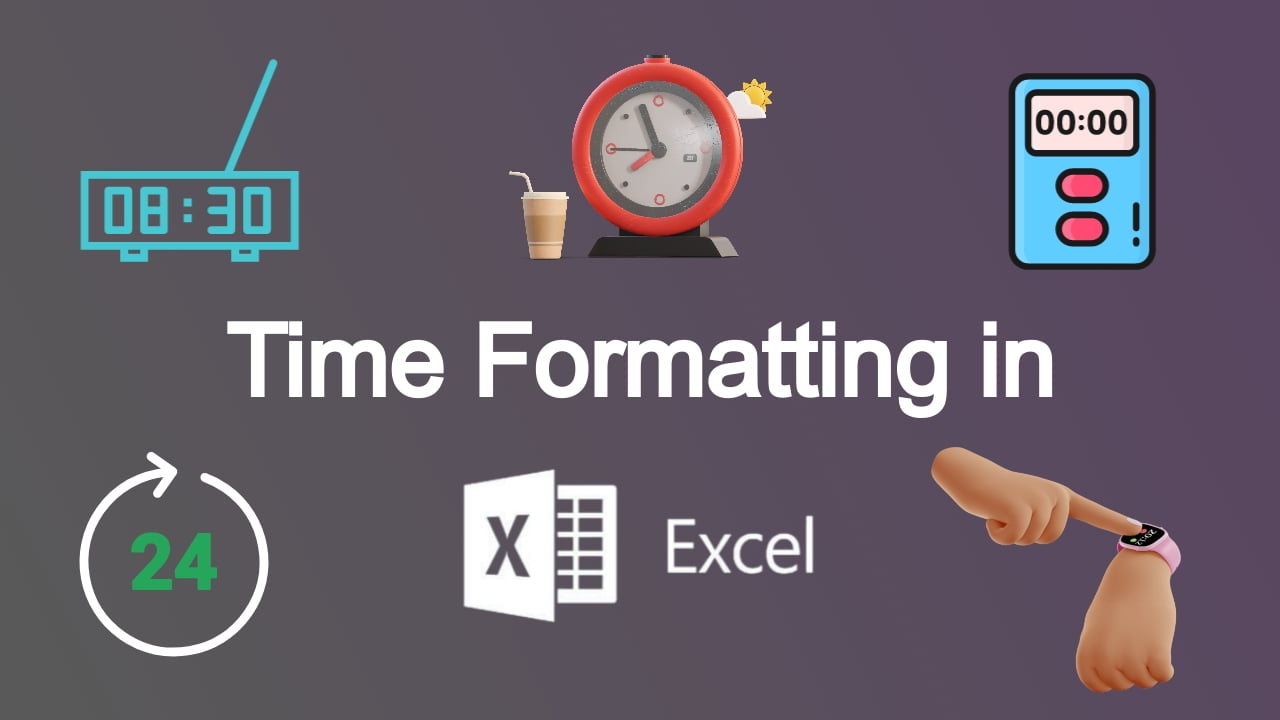When working with numerical data in Excel, it’s important to know how to format times properly. Whether you’re keeping track of project hours, planning events, or looking at time-related data, Excel offers many ways to format times. This detailed guide will teach you different methods to become skilled at time formatting in Excel. These skills will make your worksheets look clear and professional.
The Importance of Time Formatting:
Properly formatting time in Excel provides several key benefits:
- Clarity: Well-formatted times are easier to read and understand immediately. It ensures your data is clear.
- Consistency: Proper formatting maintains a uniform appearance throughout your worksheet and reduces any potential confusion.
- Analysis: Formatted times enable accurate calculations, duration measurements, and understanding of time-related data correctly.
- Professionalism: A well-organized spreadsheet with properly formatted times reflects professionalism.
Now, let’s explore the techniques for mastering time formatting in Excel:
Method 1: Using the Format Cells Dialog Box
- Select the Cells: Begin by selecting the cells containing your time values.
- Access the Format Cells Dialog box: Right-click on the selected cells and choose “Format Cells” from the context menu. Alternatively, you can use the keyboard shortcut “Ctrl” + “1”.

- Navigate to the Number Tab: Inside the “Format Cells” dialog box, navigate to the “Number” tab.

- Choose Time Format: Under the “Category” section on the left, select “Time.” You’ll find various predefined time formats in the right-hand pane. Choose the required time format. The “Sample” box allows you to preview changes. Once satisfied, click “OK” to apply the chosen format to the selected cells.

Method 2: Number Format Drop-Down in the “Number” Group:
- Select the Cells: Choose the cells containing time data.
- Ribbon Access: Head to the “Home” tab in the Excel Ribbon and locate the “Number Format” drop-down within the “Number” group.

- Choose Time Format: Click the drop-down arrow next to the Number Format box and choose the “Time” option. Excel will display the time as “Long Time” format as 00:00:00. Once you’ve made your selection, Excel will apply this format to the selected cells.

Method 3: Keyboard Shortcut
Excel provides a convenient keyboard shortcut for quick time formatting.
- Select the Cells: Highlight the cells containing time values.
- Use the Keyboard Shortcut: Apply the keyboard shortcut “Ctrl” + “Shift” + “2 (@)”. This will apply the default time format to the selected cells, typically in 24-hour “hh:mm” format.
Mastering time formatting techniques in Excel is important for making neat and attractive spreadsheets. You have three methods to choose from, so pick the one that suits your needs best.
Discover more from Excellopedia
Subscribe to get the latest posts sent to your email.
